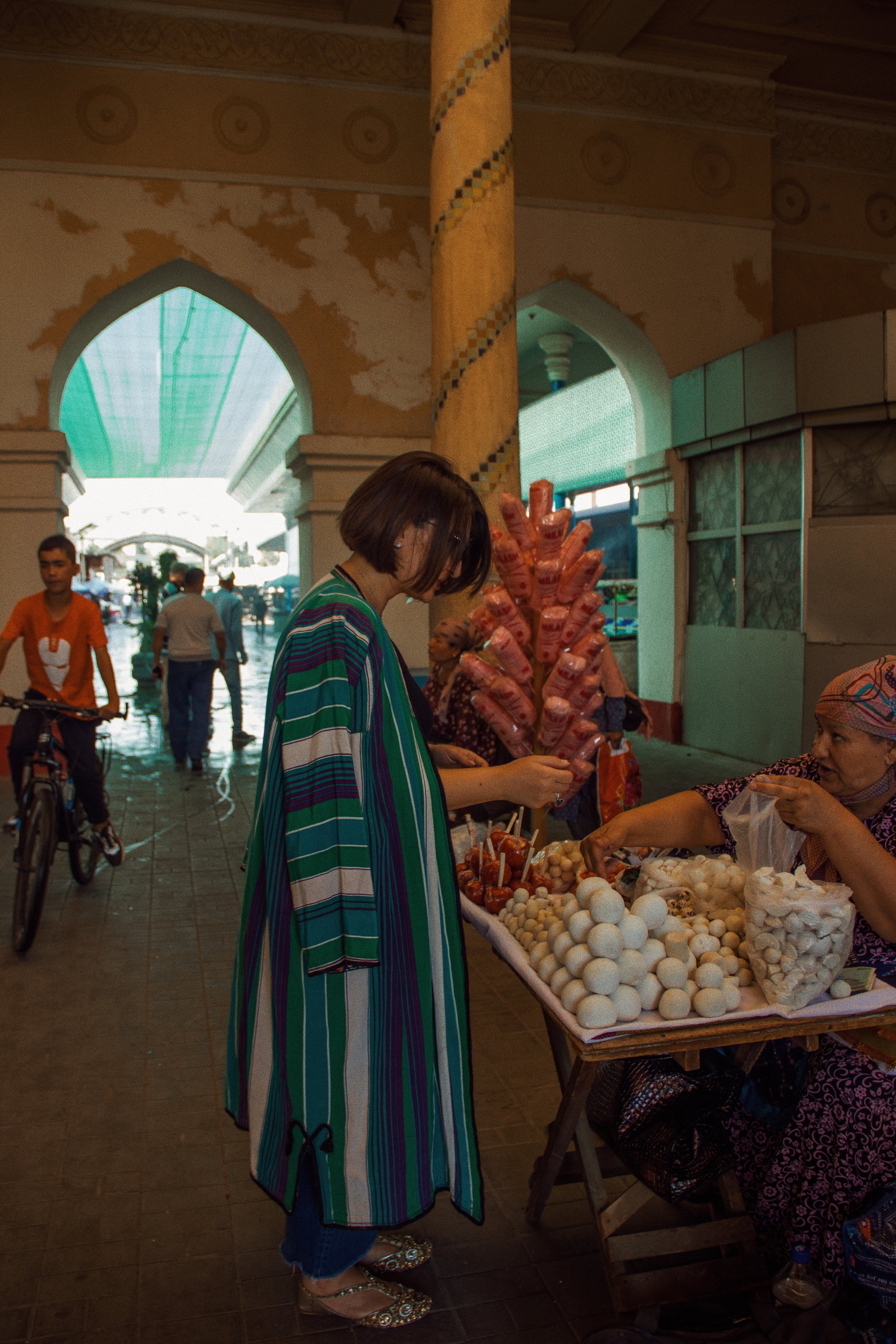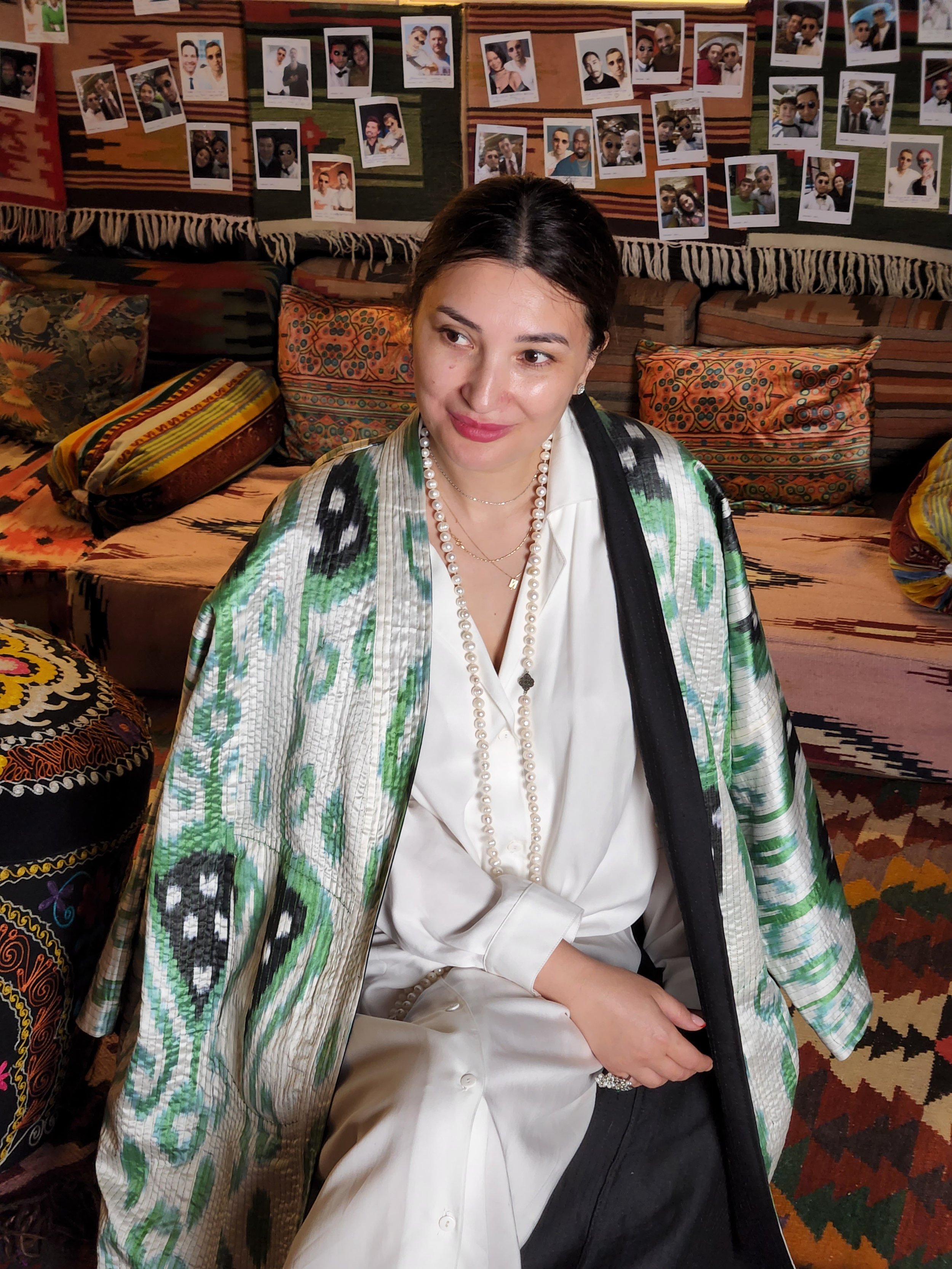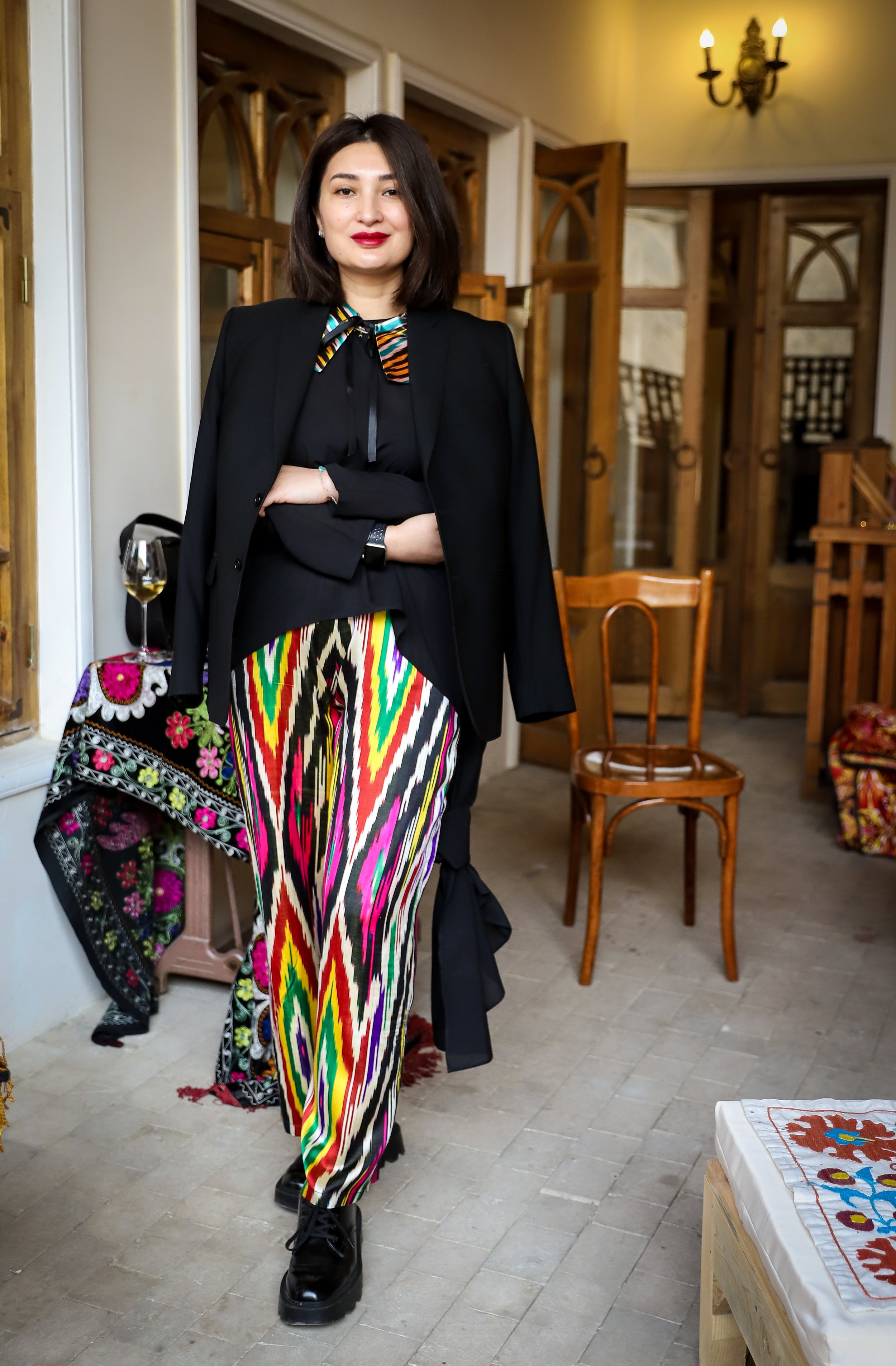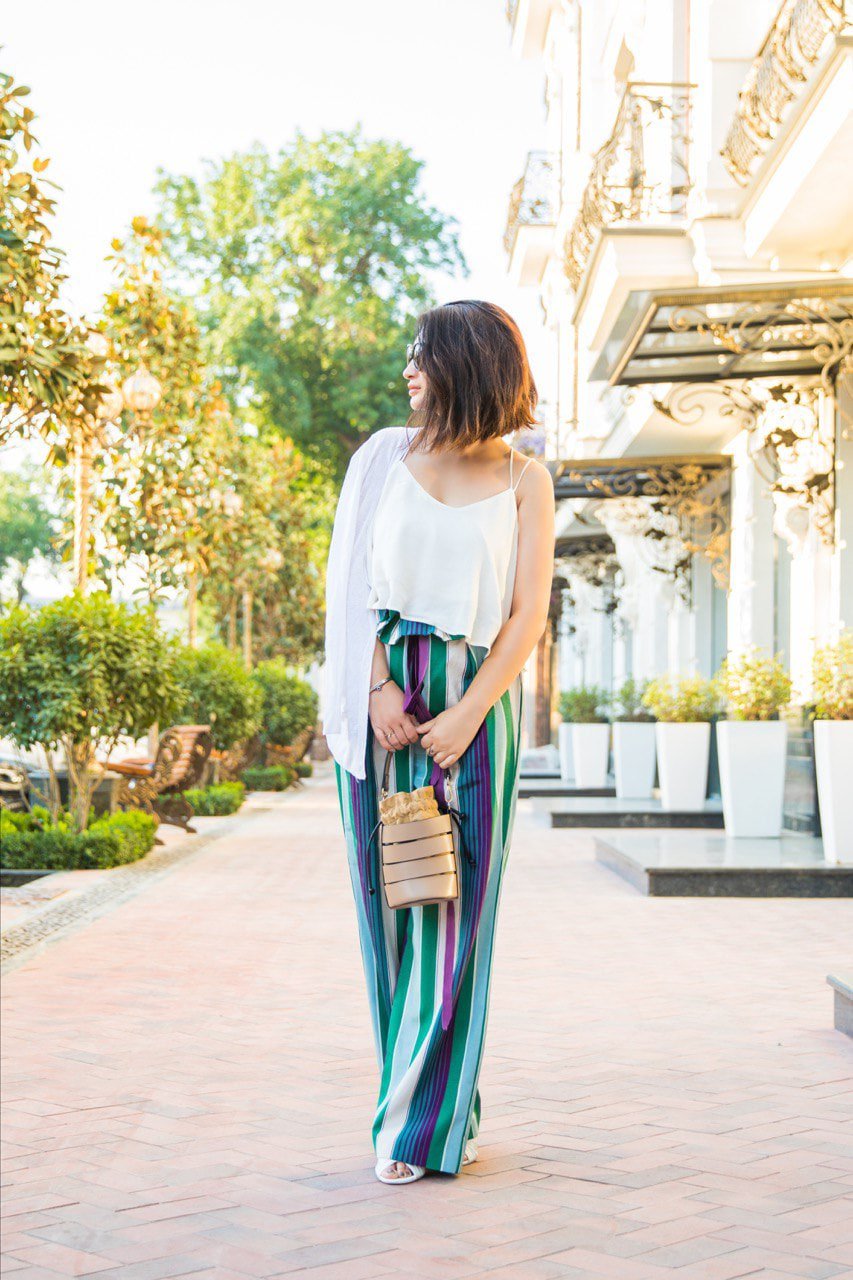Coated in Culture: The Chapan's Comeback
Visit Uzbekistan's project manager Sabina Odinaeva sat down with Coco Chapan stylist and blogger Nadira Abdurakhmanova to talk about the rise of the traditional chapan and how to put together uniquely Uzbek outfits.
Photos by Aziza Khamidova
Recently, Nadira has been organising shopping tours in Chorsu Bazaar. She picks up Uzbek chapans (overcoats) for her guests and offers advice about how to wear and style them. It all started with her immense love for Uzbek fabrics and traditions.
“This is the period when we consciously choose our fabrics for all occasions. With those fabrics, we are returning to our traditional styles and shapes.”
“Proof of this is my unique project, which has gained popularity in a short period of time! Not many people went to Chorsu Bazaar to dress up before that. Many people have messaged me to say that I inspired them to a new trend of wearing chapans in their everyday life.The rise in interest in Uzbek chapans has not just been among locals, but also with visitors. In the short period of my project's existence, I’ve had guests from 13 countries interested in chapans.”
The blogger and stylist advocates both conscious consumption and conscious fashion. Many people may think that traditional Uzbek fabrics are very bright and colourful and are only to be worn on holidays, while everyone wears Western styles and synthetic fabrics. Through her social media posts, Nadira is instilling a love of Uzbek clothing and presenting it in a modern way.
“Trends are fast-fashion; they are fleeting,” says Nadira. “For me, it will always be the clothes that suit me and are appropriate. I’m all for personal style – it’s much more interesting. If you find your own recognisable style, then I can safely call you wise.”
For several years now, Nadira has placed a strong emphasis on the chapan. For her, it is the staple of an Uzbek wardrobe, and she consistently shows how comfortable and beautiful it is to wear a chapan in everyday life.
“I wear chapans over sports attire and I wear them to fashion shows,” she says. “That's the range of my going out! I love bekasam (striped, semi-silk material) chapans – they are distinctive and suit absolutely everyone! Chapans are sometimes considered more of a ‘masculine’ piece of clothing, and we’ve broken that stereotype on our tours! You can buy them wherever you like, but I prefer the heart of the old town in Chorsu Bazaar. I love the energy of that place – the people and the opportunity to bargain.”
For everyday wear, Nadira suggests clothing made of Uzbek fabrics in slightly muted colours. Fabrics that are more vibrant, like khan atlas and alo bakhmal, are for going out, she says.
“For me personally, there are no restrictions on wearing Uzbek outfits. I can wear all our fabrics both to a feast and on an ordinary day! We have the most unique fabrics, which the whole world appreciates. They are made according to ancient technologies, preserving all their value, and most importantly, their organicity. These fabrics are an escape from the hot weather and are comfortable to wear.”





